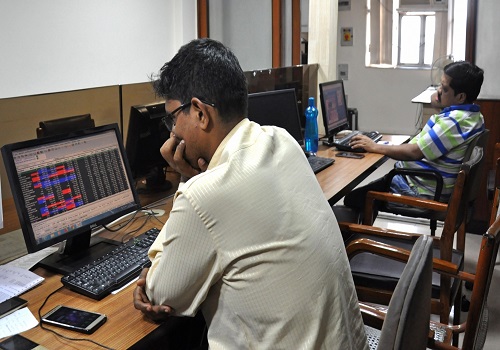Weekly View on Fixed Income Markets by Puneet Pal, Head-Fixed Income, PGIM India Mutual Fund

Below the Quote on Weekly View on Fixed Income Markets by Puneet Pal, Head-Fixed Income, PGIM India Mutual Fund
The current stance of RBI is to support growth and it has taken a proactive approach towards liquidity management. Bond markets are expecting deeper rate cuts of 50-70 bps over the next two quarters after the change in monetary policy stance to “accommodative”. Demand supply dynamics remain favourable in the bond markets with RBI conducting OMOs.
Investors can continue to allocate to Short Term/Corporate Bond Funds having portfolio duration up to 4yrs while being tactical in their allocation to Dynamic Bond Funds. Investors should have an investment horizon of 12-18 months while investing. Money market yields of up to 1yr are looking attractive from a relative risk-reward scenario and investors can look to allocate in that segment also. We expect the 10yr bond yield to trade in the range of 6.00% to 6.50% over the course of the next one quarter.
Indian Markets:
The month started with robust PMI numbers though marginally lower from previous month. The composite PMI came in at 59.7 compared to 60 for the previous month. Bonds remained resilient as RBI is conducting Open Market Operations (OMOs) which are leading to a favourable demand supply scenario in the bond markets and also the fact that inflation is coming well below 4% and is expected to align durably with the 4% target in this fiscal year.
The CPI number for April due on 13th is expected to come in at 3.20%. Government conducted a bond switch with RBI to the tune of INR 373bn on a cash neutral basis in which it sold 2036 maturity securities and bought back securities maturing in 2026. RBI is also expected to declared a substantially higher dividend of close to INR 3trn relative to earlier expectations of INR 2.50trn, which will help both market liquidity and the fiscal position of the government.
OMO cut offs have also been at the higher end of market expectations which have supported the markets. RBI has relaxed investment rules for FPI’s in corporate bonds in respect of maximum 30% holding in short tenure bonds and also in respect of the single issuer exposure limits. This comes as FPI selling in debt continues in May with USD 235mn of outflows since the start of the month. The FPI limits in corporate bonds remain largely unutilised, currently only 14.50% of the INR 7.6 trn limit has been utilised and this flexibility may increase FPI investments in corporate bonds.
As RBI has increased OMO purchases, the net short USD position of RBI in the forwards has reduced to USD 64.2bn as of March end compared to USD 88bn as of Feb end. This shows that RBI has been reducing its short USD positions and neutralising the resultant draining of liquidity by conducting OMOs. RBI has increased its gold reserves by 58 tonnes in FY25 to 879.59 tonnes, constituting 11.70% of its FX reserves. RBI holding of gold has doubled in the last four years. The FX reserves stand at USD 688bn as of 25 April, down USD17bn from the all-time high of USD 705bn it touched in September 2024. The import cover stands at 10.50 months as of March end compared to 11.80 months six months back.
Money Market yields were stable tough it inched higher as geopolitical concerns escalated with both the 1yr and the 3 month maturity CD yields higher by around 10bps compared to a fortnight back. The OIS curve remained stable and also steepened relatively with the 1yr OIS moving lower by 2 bps to end the week at 5.64% while the 5yr OIS edged higher by 3 bps to end the week at 5.66%.
Brent crude edged higher to end the week at 63.91 as DXY strengthened to 100.34 from 99.47 at the start of the month. INR seems to have stabilised even though it weakened during the week. INR has appreciated by 2.50% since touching a low of 87.58 in February.
International Markets:
Globally, bond yields edged higher as trade talks gathered pace. The US Fed stood pat on interest rates in an unanimous vote and commenting that there were in no hurry to cut interest rates and that tariffs can lead to both higher inflation and higher unemployment rate. Bank of England reduced rates, as expected and signalled more cuts. China also reduced its 7 day repurchase rate and also cut the CRR, increasing monetary accommodative at a time of economic uncertainty amidst imposition of tariffs by USA.
Above views are of the author and not of the website kindly read disclaimer










Tag News

F & O Rollover Report 26th December 2025 by Axis Securities



More News

Quote on Market 22nd August 2025 from Vinod Nair, Head of Research, Geojit Investments Limited









